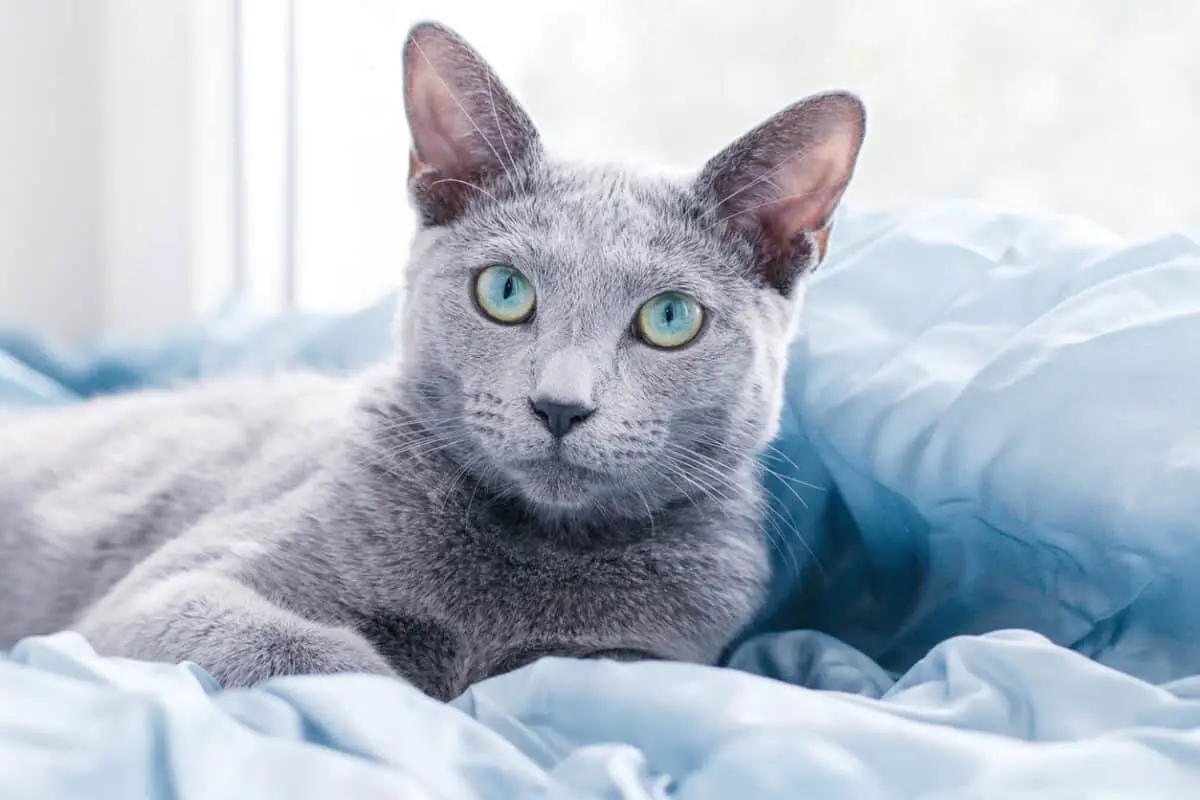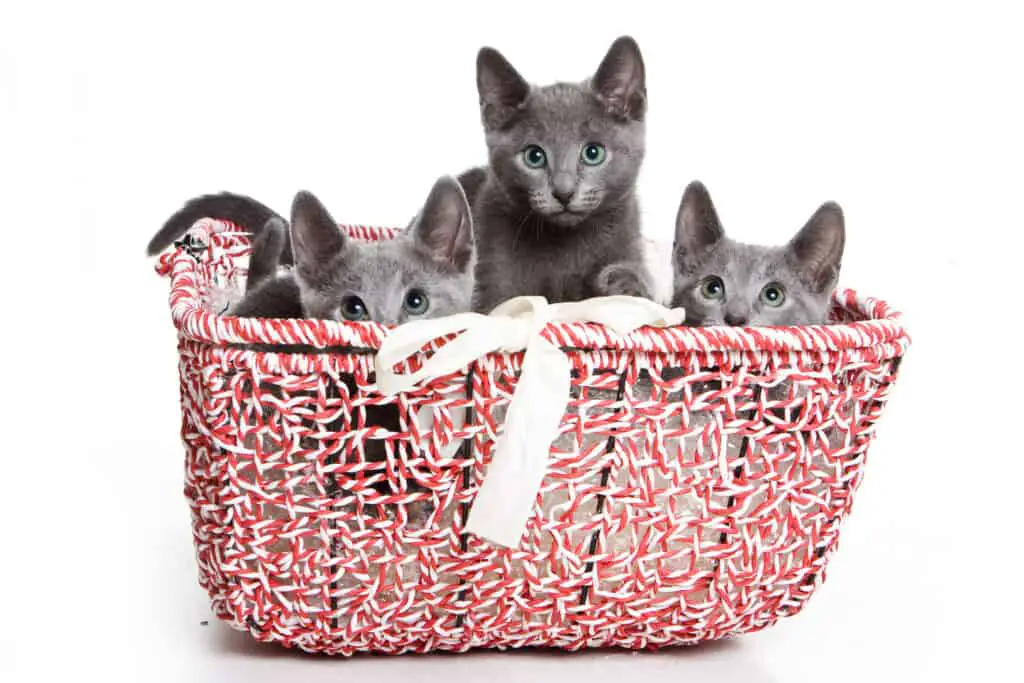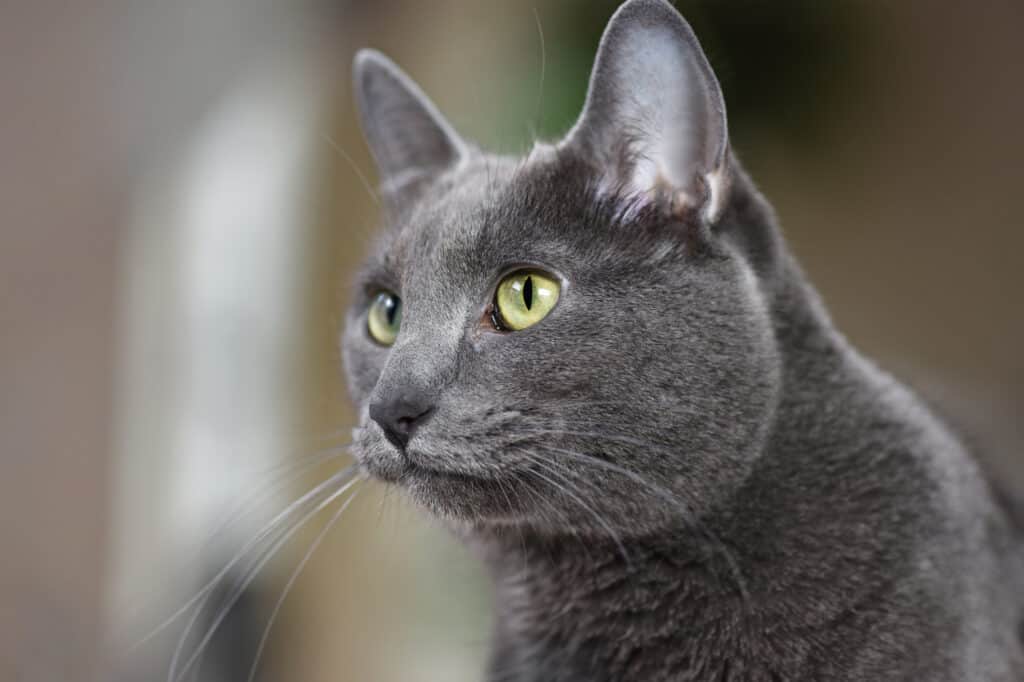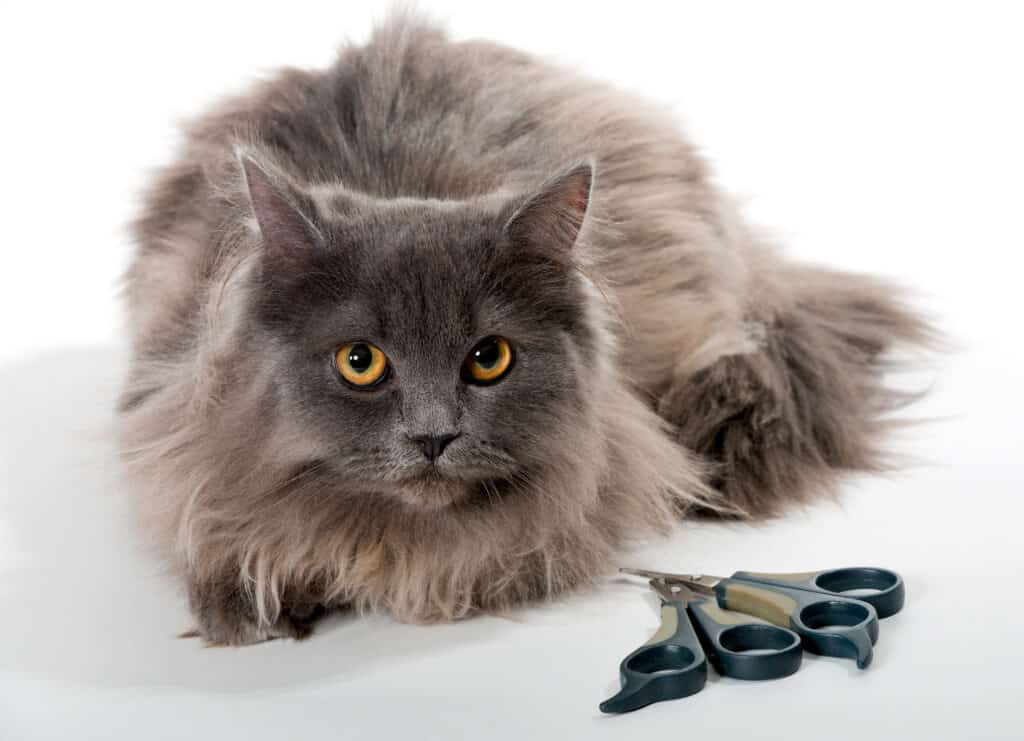Russian blue cats are exotic looking and draw a lot of attention. They typically have shorter finer fur and their gray coat has a blue hue in certain lighting. These beautiful felines aren’t easily found and can be expensive to obtain.
A purebred Russian Blue cat is rare. Europeans must reserve one ahead of time from a good cattery to claim it as their pet and the cost is around 1,000 euros (also about $1,000 in U.S. dollars). They can be more easily obtained in the U.S. but Russian Blue kittens will cost between $400 and $600.
Read further to find out more about this unique breed.
The Cause of Rarity
Unlike a lot of designer feline breeds, Russian Blue cats weren’t a man-made line. They started as a natural breed. However, they became fewer near the end of World War II and nearly went extinct.
Today’s Russian Blues are always true blue because breeders started using other breeds that had similar features to maintain the bloodline. Many Russian Blue cats today have British Blue or Siamese genes in them.
Russian Blue cats are available in the U.S. and the world through reputable breeders but can’t be found in places like shelters. Most of the Russian Blues sold through breeders are not completely purebred but have a mix of one of the other similar felines in the bloodline.
A purebred Russian Blue is incredibly rare and pretty expensive to buy. You would need a pedigree certificate to maintain your proof in case you wanted to enter feline shows or breed them yourself.
Characteristics of a Russian Blue
A Russian Blue cat, even those with a bit of a mixed bloodline, has some common traits. They are short-hair cats with a thick gray-blue coat that shimmers in the light. A distinctive feature of Russian Blues is their bright emerald green eyes.
They grow to be around 10 inches tall and weigh anywhere between 7 to 15 pounds. Their lifespan is good too with most living up to between 15 to 20 years.
Russian Blues are highly intelligent, and affectionate but not demanding. They also have their other common traits:
- They have a dignified calm demeanor.
- They are a little shy in new surroundings but adjust easily.
- They form an intense connection with only one person.
- They do well living with families and other pets.
- They are loyal.
- They need a daily routine to be happy.
Reasons People Want a Russian Blue Cat
The primary reason most people want a Russian Blue cat is because of their distinctive looks.
Their coat is gorgeous and their eyes show up against their coat magnificently. They are easy to train and can even be taught tricks similar to a dog.
Another reason people love this breed is they are one of the few hypoallergenic cat breeds and require little grooming. They have a great temperament and get along with everyone from children to seniors, other cats, and even dogs.
They are loving and sweet, making them great family pets.
Maintenance of a Russia Blue
Russian Blues are pretty easy to maintain but are finicky about hygiene. They constantly groom themselves and don’t like a messy litter box!
You must manage their luscious coats to keep your Russian Blue looking its best. That requires you to brush its coat with a medium to small-toothed metal comb one or two times a week. That won’t be a problem because these cats love the extra attention!
Russian Blues aren’t fussy about their diets and will eat small nibbles between 10 to 15 times a day. Kittens will need to eat more than adults because they are high energy.
Russian Blues need a high-protein diet with balanced nutrients on a regular feeding schedule. They can eat dry and wet food and will do well with any premium food that is meat-rich, grain-free, and low in carbohydrates with good moisture content.
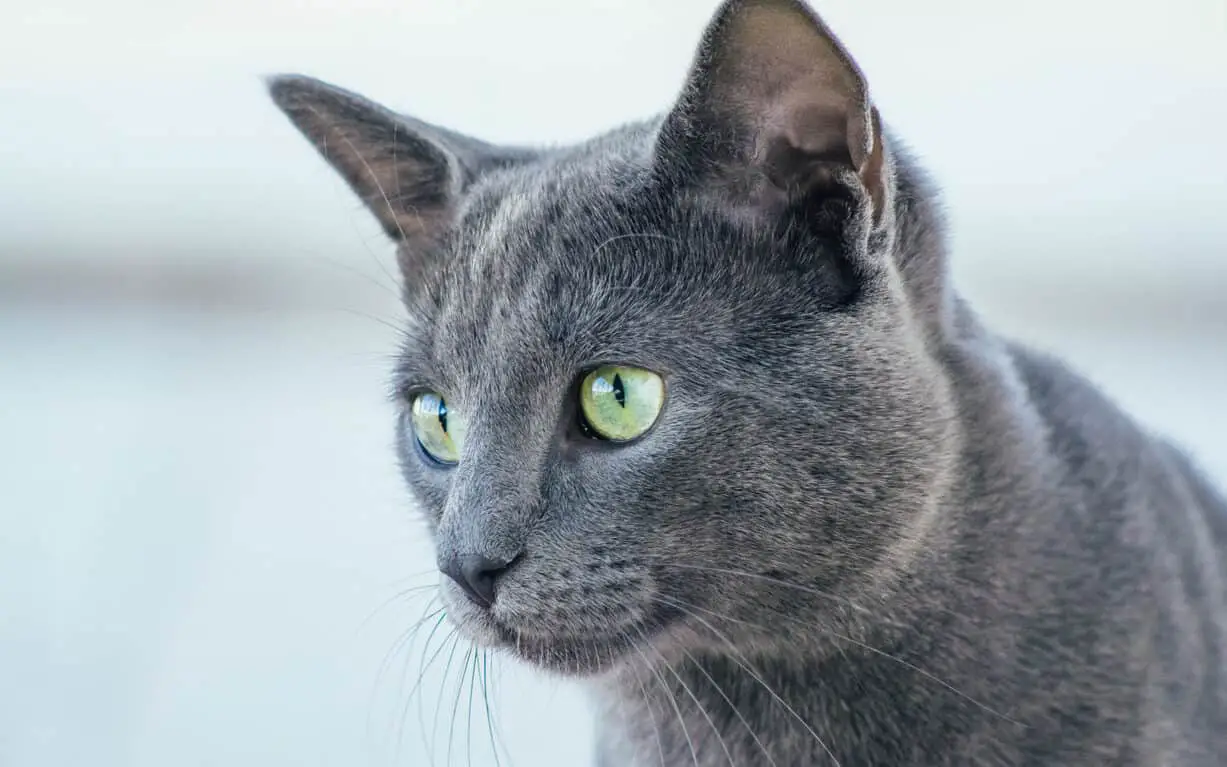
How to Find a Healthy Russian Blue
The best way to find a healthy Russian Blue is through a reputable breeder. You will want a breeder recognized and in good standing with The International Cat Association (TICA). There are around 11 such breeders in Canada and 16 in the U.S.
U.S. breeders for Russian Blues are in Lousiana, Michigan, Missouri, New Jersey, New York, Ohio, Oklahoma, South Carolina, and Washington.
You will need to talk to breeders about care, shots, and whether they provide spaying or neutering. Most breeders spay and neuter unless you have a prior agreement and approval regarding breeding. Those are typically only offered to other recognized catteries.
Our Final Thoughts
Those with the money to spend on a well-bread cat should consider the Russian Blue. They live a long time and are easy to maintain. They don’t require special treatment as other exotic breeds and are rarely in a bad mood. A Russian Blue makes a great companion for yourself and any other pet you own.
Love reading about cats?
Have a look at our other popular articles.
-

10 Ways to Make Your Cat Live Longer
The oldest cat to ever live passed away at the old age of 38. On average, household cats live between […]
-

12 Reasons Why Siamese Cats Cry at Night
Siamese cats are a popular breed of cats that many people choose to have as pets. Perhaps you have heard […]
-
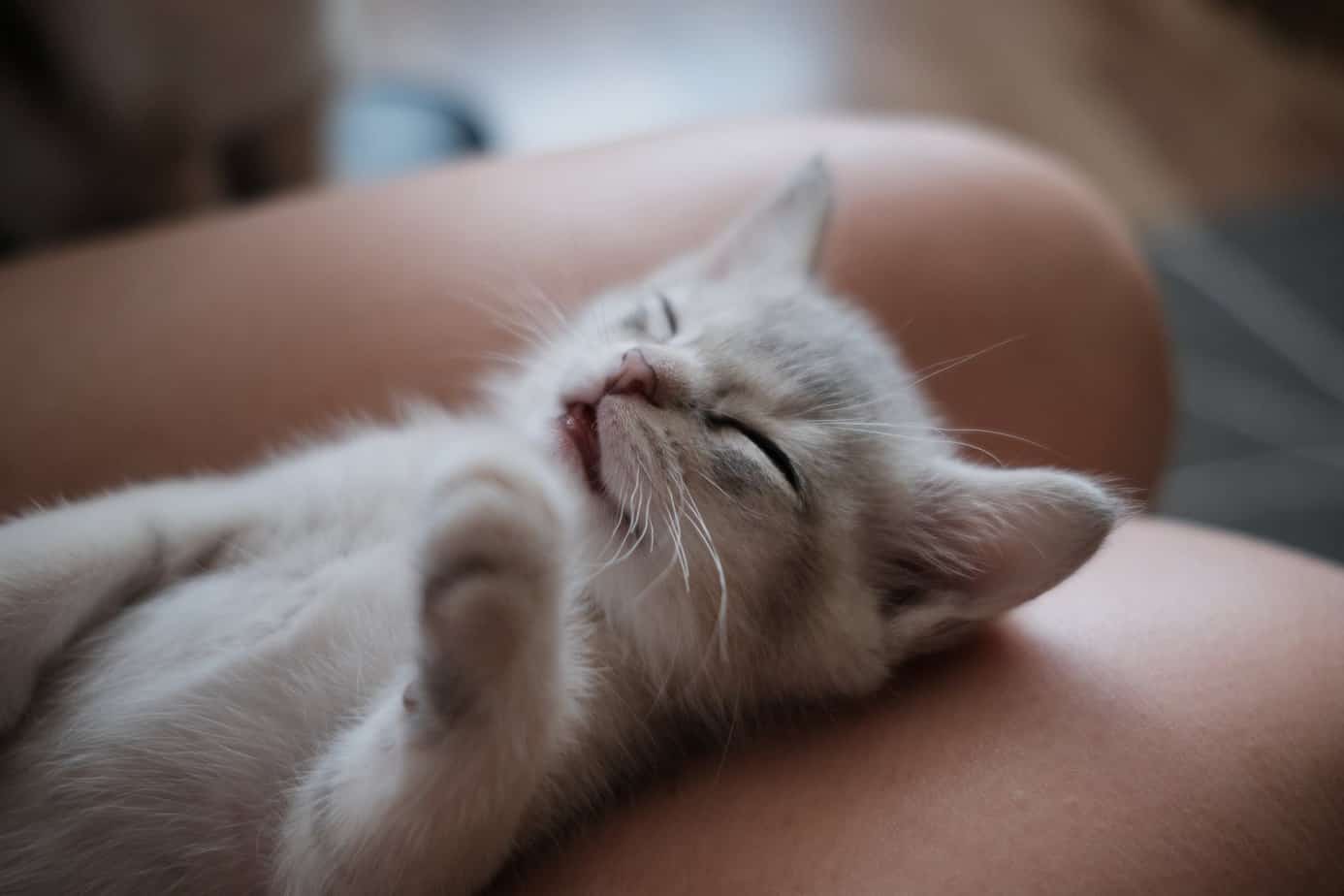
15 Incredible Ways That Cats Show Affection For Humans
Wondering how cats show their affection for humans? We have listed several incredible ways that cats are trying to show their love for us.

